When Marines hit the beaches of Iwo Jima, their watches needed to survive more than enemy fire. Salt spray. Torrential rain. River crossings. Ocean landings. The water resistant watch meaning became crystal clear in combat: a flooded timepiece could mean mission failure or death. Military forces discovered that understanding water resistant watch meaning meant survival.
Today's watch buyers face similar confusion about water resistance ratings. A 50-meter water resistant rating sounds impressive until your "waterproof" watch floods during a pool dive. Understanding the true water resistant watch meaning separates smart buyers from disappointed ones. Military timepieces solved these problems decades ago through battle-tested specifications that civilian manufacturers still struggle to match.
Praesidus watches honor this heritage by delivering military-grade water resistance standards that perform when it matters. Every rating tells a story. Every specification serves a purpose. This comprehensive water resistant watch meaning guide reveals exactly what those numbers mean for real-world use.

Why Water Resistance Matters: Lessons from the Battlefield
Military operations don't pause for weather. When Navy SEALs conduct underwater demolition, their watches face crushing pressure. When Rangers cross rivers under fire, timepieces endure complete submersion. When Special Forces operate in monsoons, equipment must function flawlessly despite constant moisture exposure. Each diver and operator depends on watches with high water resistance that won't fail when lives depend on precise timing. The military water resistant watch meaning encompasses life-or-death reliability standards.
The True Cost of Water Damage
Water damage destroys more watches than any other cause. Moisture infiltration corrodes movements, fogs crystals, and ruins expensive timepieces permanently. Unlike impact damage that's usually visible, water infiltration works silently until total failure occurs. Grasping the complete water resistant watch meaning becomes critical for protection—understanding what does 10 atm mean on a watch versus what does 5 atm mean. Even basic activities like washing your hands can damage the watch if the level of water resistance proves inadequate.
Decoding the Military Approach to Water Resistance
Military specifications demand performance guarantees, not marketing claims. When the U.S. Navy issues dive watches, they undergo rigorous water resistance testing beyond manufacturer claims. These tests simulate real conditions: rapid water pressure changes, temperature extremes, and sustained submersion that reveals true capabilities. Understanding what is 10 atm water resistant versus marketing fluff helps distinguish genuine protection. Military contractors ensure each watch is tested under conditions that replicate salt water exposure and extreme pressure a watch faces in combat zones.
Understanding military water resistance standards helps civilian buyers make informed decisions. A watch can withstand genuine military operations offers proven protection. Affordable waterproof watches with impressive-sounding ratings often fail basic water resistance requirements. Learning the authentic water resistant watch meaning prevents expensive mistakes when choosing timepieces. Knowing what does 3 atm mean on a watch versus what does 20 atm watch capability provides prevents expensive mistakes. The watch industry learned these lessons through military contracts where failure wasn't acceptable.

How Military History Shaped Modern Water Resistance Standards
Combat drove every major advancement in watch water resistance. Each conflict revealed new requirements that pushed manufacturers toward better sealing technologies and more accurate rating systems. War forged the modern water resistant watch meaning through brutal field testing.
World War II: The Birth of True Water Resistance
WWII transformed water resistance from afterthought to necessity. Amphibious landings demanded timepieces that survived saltwater immersion. Submarine operations required watches that functioned at depth. Jungle warfare needed instruments that resisted tropical humidity. This era established the foundational water resistant watch meaning still relevant today.
The A-11 field watch addressed basic moisture protection through improved case sealing and crown design. Naval operations drove development of the first true dive watch models with enhanced water resistance levels. These wartime innovations established principles still used in modern waterproof watches.
Key innovations from this era included:
- Screw-down crowns that eliminated the primary failure point
- Improved gasket materials that maintained flexibility
- Case construction that withstood pressure changes
- Crystal mounting that prevented moisture infiltration
The A-11's influence extends far beyond its military service. Its clean, utilitarian design established the template for field watches that continues today. When you see a modern field watch with high legibility and minimalist styling, you're looking at the A-11's direct descendant. These watches proved that basic 50m water resistance could protect instruments during combat operations where soldiers couldn't worry about water to permeate their equipment.

Cold War Diving Operations: Pushing the Limits
Cold War submarine warfare and special operations created demand for watches capable of extreme depth performance. Navy diving teams needed timepieces that functioned during saturation diving operations. These requirements pushed water resistance in watches far beyond civilian needs. Cold War innovations expanded the water resistant watch meaning beyond basic survival.
The 10 atm and 20 atm ratings emerged from real operational requirements. Combat swimmers needed timing devices during underwater demolition missions. Submarine crews required instruments that functioned during emergency ascents. These extreme conditions validated water resistance technologies under the most demanding circumstances possible. Understanding 10 atm in feet (approximately 330 feet) and 20 atm depth capabilities became essential for mission planning. Military divers needed to know exactly how deep their watch can handle before pressure compromised function.
Modern Special Operations: Beyond Traditional Ratings
Contemporary military operations combine traditional water resistance with advanced materials and sealing technologies. Special forces units operate in environments that combine crushing depths, extreme temperatures, and chemical exposure that would destroy conventional timepieces. Modern warfare continues evolving the water resistant watch meaning through technological advancement.
Modern military dive watches incorporate innovations like:
- Helium escape valves for saturation diving
- Titanium construction for corrosion resistance
- Ceramic bezels that won't degrade in saltwater
- Advanced sealing systems that maintain integrity under pressure
These advances benefit civilian users through trickle-down technology that improves all water-resistant watches.
What the Numbers Actually Mean: Breaking Down Water Resistance Ratings
Water resistance ratings confuse more buyers than they help. The numbers don't represent actual diving depths. Instead, they indicate pressure resistance under controlled laboratory conditions. Understanding this distinction prevents expensive mistakes. Comprehending the full water resistant watch meaning requires knowing that water resistance is expressed in metres of water or atmospheric pressure, but these numbers don't translate directly to real-world diving capabilities. A "water resistant 100m" marking doesn't mean the watch can be worn safely to 100 meters depth.
The ATM Scale: More Than Marketing Numbers
3 atm water resistance provides basic splash protection suitable for handwashing and light rain. This water resistance level protects against incidental moisture but fails during any submersion. Fashion watches typically use this minimal rating to claim water resistance while providing little real protection. Understanding 3 atm meaning prevents disappointment during water activities. This level of water resistance barely protects against a single drop of water entering the case during active use. The basic water resistant watch meaning starts with 3 atm specifications.
5 atm coverage handles brief submersion and shower exposure. This rating protects against accidental drops in water but doesn't support swimming or diving activities. Many luxury dress watches use this specification for everyday moisture protection without supporting active water use. Knowing what does 5 atm water resistant mean helps set proper expectations. However, you shouldn't shower with your watch at this rating unless specifically engineered for heavy water usage and temperature changes. The intermediate water resistant watch meaning emerges at 5 atm levels.
10 atm ratings represent the minimum standard for swimming and recreational water activities. This water resistance rating handles sustained submersion and moderate pressure changes. Military field watches typically meet or exceed this standard for operational reliability. Understanding what does 10 atm water resistant mean in practical terms helps buyers choose confidently. At 10atm, the watch is water resistant enough for water sports like swimming and diving into a pool, making it suitable for active military personnel. The practical water resistant watch meaning becomes clear at 10 atm ratings.
20 atm specifications support recreational diving to approximately 200 meters. Military dive watches often feature this rating for special operations requiring underwater capability. The rating provides substantial safety margin for most civilian water activities. Knowing what does 20 bar water resistant mean (equivalent to 20 atm) ensures proper application. At this level of water resistance, the watch demonstrates water usage and can withstand depths of at least 200 meters under controlled conditions. Professional water resistant watch meaning emerges at 20 atm specifications.
Beyond the Numbers: What Really Matters
Static pressure testing doesn't replicate real-world conditions. Jumping into a pool creates pressure spikes that exceed static ratings. Temperature changes affect gasket performance. Crown operation underwater compromises sealing regardless of ratings. Understanding is water resistant waterproof distinctions prevents misuse. Even common water resistance ratings can fail when terms of water exposure exceed design parameters.
Understanding these limitations helps buyers choose watches appropriate for intended use. A 50 meters rating sounds impressive but may not survive aggressive swimming. A 100 meters specification provides genuine swimming capability when properly sealed. Knowing what does 100m water resistant mean in practical application guides proper selection. The complete water resistant watch meaning encompasses understanding that water resistance refers to tested capability under specific conditions, not unlimited protection under all circumstances.
Key factors affecting real-world performance include:
- Screw-down crown operation that maintains sealing integrity
- Pusher sealing for chronograph functions underwater
- Gasket condition and regular replacement schedules
- Case construction quality and manufacturing precision
- Crystal mounting and bezel sealing effectiveness
- 1 bar minimum pressure testing for basic protection

Military vs. Civilian Rating Standards
Military specifications exceed civilian standards through rigorous testing protocols. When the military rates a watch for diving operations, it undergoes pressure testing, temperature cycling, and impact resistance verification that civilian manufacturers rarely match. Military testing ensures the watch can handle conditions far beyond rated water specifications, providing confidence for combat operations.
Praesidus military-inspired timepieces apply military-grade standards to civilian watches. This approach ensures genuine performance rather than marketing claims. Each watch earns its water resistance rating through comprehensive testing that validates real-world capability.
Understanding Different Types of Water Resistance
Not all water resistance serves the same purpose. Different activities demand specific protection levels. Matching watch capabilities to intended use prevents disappointment and expensive repairs. Understanding the complete water resistant watch meaning requires matching ratings to activities.
Basic Moisture Protection: 30-50 Meters
30 meters and 50 meters ratings provide protection against everyday moisture exposure. These specifications handle rain, handwashing, and brief splashes without damage. However, they don't support swimming, showering, or any sustained water contact. Understanding what does 50 meters water resistant mean prevents overconfidence in capability. At 10 meters or less, watches offer minimal protection resistant to water splashes but nothing more substantial. The entry-level water resistant watch meaning covers basic daily exposure.
Fashion watches commonly use these minimal ratings to claim water resistance while providing limited real protection. The ratings satisfy legal requirements without delivering functional capability for active use. Buyers asking are watches waterproof need to understand these basic protection levels don't support water sports. Even 50 meters of water resistance doesn't guarantee swimming capability without proper sealing throughout the case.
Swimming and Recreation: 100-200 Meters
100 meters represents the minimum standard for confident swimming and water sports activities. This rating provides substantial pressure resistance and safety margin for recreational activities. Most quality sports watches meet this specification as baseline capability. Understanding what does swimproof mean versus basic water resistance clarifies appropriate use. At this level, meters of water resistance translate to genuine swimming capability for active users. The recreational water resistant watch meaning begins at 100 meter ratings.
200 meters ratings support recreational diving and professional water use. This water resistance level handles pressure changes from diving into pools and basic scuba diving activities. Military-inspired watches often feature this rating for tactical operations.
Professional Diving: 300+ Meters
Professional diving operations demand water resistance ratings of 300 meters or higher. These specifications support commercial diving, military operations, and extreme water sports. True dive watches feature these ratings along with specialized timing bezels and enhanced legibility. Understanding how deep is 20 atm (approximately 200 meters) versus higher ratings guides professional selection. At 50 atm, professional divers get capability that supports extreme depth operations. The professional water resistant watch meaning requires extreme depth capabilities.
Water depth capabilities at this level require additional safety features:
- Unidirectional timing bezels that prevent dangerous time extensions
- Enhanced luminosity for underwater visibility
- Robust construction that withstands impact and atmosphere pressure
- Screw-down crown systems that maintain integrity under pressure
- 10 bar or higher ratings for genuine diving capability
The Science Behind Water Resistance: How Watches Stay Dry
Water resistance depends on multiple sealing systems working together. Understanding these systems helps buyers evaluate quality and maintain performance over time. The technical water resistant watch meaning involves complex engineering solutions.
Primary Sealing Points
Watch cases feature several potential water entry points that require individual sealing solutions. The crown represents the most vulnerable area because it must move while maintaining water integrity. Case backs need sealing around their perimeter. Crystal mounting requires weatherproof mounting systems. Understanding how to tell if a watch is waterproof requires examining these sealing points. Even the dial or case back can allow moisture inside the watch if sealing fails.
Quality watches address each sealing point through engineered solutions:
- O-ring gaskets that compress under pressure to create watertight seals
- Threaded components that use mechanical pressure for sealing
- Welded joints that eliminate potential failure points
- Case construction that minimizes sealing requirements
Pressure Testing and Quality Control
Manufacturers verify water resistance through pressure chamber testing that simulates underwater conditions. However, these controlled tests don't replicate real-world stresses like temperature changes, impact, and crown operation underwater. Questions like is my watch waterproof require understanding these testing limitations versus real-world performance. Manufacturers test at 1 atm (approximately 10 meters) as baseline, but real protection depends on complete sealing integrity.
Military contractors demand additional testing that includes:
- Thermal cycling that tests gasket performance across temperature ranges
- Impact testing while submerged to verify sealing integrity
- Extended submersion testing that reveals long-term sealing performance
- Field testing under actual operational conditions
Maintenance and Long-Term Performance
Water resistance degrades over time through gasket aging, case wear, and seal deterioration. Regular maintenance preserves protection through gasket replacement and pressure testing verification. Water resistance may diminish without visible signs, making regular service essential. Proper maintenance ensures gaskets will need replacement before failure occurs.
Professional servicing should include:
- Gasket inspection and replacement every 2-3 years
- Pressure testing after any service or impact
- Crown and case back inspection for wear or damage
- Crystal mounting verification for proper sealing
- Watch checked for dial or case back integrity
- Verification that the watch dial remains moisture-free
Military-Grade Features That Enhance Water Resistance
Military timepieces incorporate additional features that improve water resistance beyond basic ratings. These battle-tested solutions solve problems that civilian manufacturers often overlook. Military-grade water resistant watch meaning extends beyond civilian requirements.
Screw-Down Crown Systems
Screw-down crown mechanisms create positive sealing that eliminates the primary failure point in watch water resistance. Military watches pioneered this technology for underwater operations where crown failure meant mission compromise. The system works through threaded engagement that compresses gaskets against the case. Proper operation requires unscrewing for time setting then tightening for water resistance. Military training emphasizes this procedure because failure to secure the crown causes immediate flooding, allowing water to permeate the movement and damage the watch permanently.
Case Construction and Materials
Military watches use robust case construction that resists pressure deformation. Thick case walls, reinforced lugs, and precision machining create structural integrity that maintains gasket compression under pressure. Advanced materials enhance performance while meeting terms of water resistance that exceed civilian standards. Military contracts demand luxury watches built to withstand conditions that would destroy conventional timepieces.
Advanced materials enhance performance:
- Titanium construction that resists saltwater corrosion
- Ceramic bezels that maintain integrity under pressure
- Sapphire crystals that resist impact and pressure
- PVD coatings that protect sealing surfaces
Professional Testing Standards
Military contracts require testing beyond civilian standards. Watches undergo pressure testing, temperature cycling, impact resistance, and field validation that ensures genuine performance capability. Contractors must take the watch through rigorous testing protocols that verify capability under combat conditions.
Praesidus watches apply military-grade testing to civilian timepieces. This commitment ensures every watch delivers authentic performance rather than marketing claims.
Common Myths and Misconceptions About Water Resistance
Watch marketing creates confusion about water resistance capabilities. Understanding common misconceptions helps buyers make informed decisions and avoid expensive mistakes. Clarifying the true water resistant watch meaning cuts through marketing confusion.
"Waterproof" vs. Water Resistant
No watch is truly waterproof. All timepieces have limits based on pressure on the watch and sealing system capabilities. The term "waterproof" disappeared from quality watch marketing because it creates unrealistic expectations. Understanding does water resistant mean waterproof prevents costly misconceptions about capability limits.
Water resistant accurately describes the protection level with specific limitations. Quality manufacturers specify exact capabilities rather than making absolute claims. This honesty helps buyers choose appropriate watches for intended use. Understanding water resistant vs waterproof watch distinctions guides realistic expectations.
Depth Ratings and Real-World Use
Water depth ratings don't correspond to actual diving capabilities. A 100 atm rating doesn't mean the watch functions at 1000 meters depth. The numbers represent static pressure resistance under laboratory conditions. Understanding what is 5 atm versus what is 10 bar water resistance prevents misapplication of capabilities.
Real-world factors that affect performance include:
- Water temperature changes that affect gasket flexibility
- Rapid pressure changes from diving or surfing
- Impact forces that compromise sealing systems
- Crown position and operation underwater
Shower and Steam Exposure
Many buyers assume water resistance protects against shower use. Hot water and steam create different challenges than cold water submersion. Temperature changes cause expansion and contraction that compromises sealing systems. Understanding what does 5 atm waterproof mean versus steam exposure prevents damage from misuse.
5 atm and 10 atm watches often fail in shower conditions despite surviving swimming activities. Steam penetrates sealing systems more easily than liquid water. Quality watches designed for shower use feature enhanced sealing specifically engineered for temperature changes. Knowing what is 5atm water resistance limitations prevents disappointment.
Choosing the Right Water Resistance for Your Needs
Selecting appropriate water resistance requires honest assessment of intended use. Matching capabilities to requirements prevents disappointment and ensures reliable performance. Personal water resistant watch meaning varies by lifestyle and activities.
Daily Wear and Incidental Exposure
Office work and everyday activities require minimal water protection. 3 atm or 5 atm ratings handle rain, handwashing, and incidental splashes. Higher ratings provide unnecessary capability that increases cost without practical benefit. Understanding what does 3 atm water resistant mean helps match protection to need. Basic terms of water resistance like 3 atm protect against everyday moisture but nothing more demanding. The practical water resistant watch meaning for office workers differs significantly from military requirements.
However, many buyers prefer 10 atm ratings for peace of mind and occasional swimming opportunities. This moderate upgrade provides substantial capability increase without significant cost impact. Understanding what does 10 bar mean on a watch (equivalent to 10 atm) clarifies this popular rating.
Active Lifestyle and Water Sports
Swimming, surfing, fishing, and water sports demand genuine water resistance capability. 10 atm represents the minimum standard for confident water use. 20 atm ratings provide additional safety margin for aggressive activities. Knowing what is better water resistant or waterproof helps set realistic expectations for active use. Athletes and outdoor enthusiasts must understand the complete water resistant watch meaning to choose appropriate protection levels.
Key features for active use include:
- Screw-down crown operation for positive sealing
- Robust construction that resists impact
- Quick-dry straps that handle repeated water exposure
- Clear time indication for underwater reading
Professional and Military Use
Professional diving, military operations, and extreme water activities require maximum water resistance levels. 30 atm and higher ratings provide capability for demanding professional use. Understanding atm meaning watch specifications becomes critical for professional applications requiring ultimate reliability.
Professional features include:
- Helium escape valves for saturation diving
- Unidirectional timing bezels for safety
- Enhanced luminosity for underwater visibility
- Robust construction that survives extreme conditions

Maintenance Tips for Long-Term Water Resistance
Preserving water resistance requires regular maintenance and proper use practices. Simple precautions extend sealing system life and maintain protection capability. Long-term water resistant watch meaning depends on proper maintenance.
Regular Inspection and Service
Annual inspection identifies potential problems before failure occurs. Professional service every 2-3 years maintains gasket integrity and verifies continued protection capability.
Inspection should include:
- Crown operation and sealing verification
- Gasket condition and replacement if needed
- Case back sealing and thread condition
- Crystal mounting and potential damage
Proper Use Practices
Correct operation preserves sealing systems and prevents damage. Simple practices maintain water resistance throughout the watch's service life.
Essential practices include:
- Never operate the crown underwater
- Rinse saltwater exposure with fresh water
- Dry the watch thoroughly after water contact
- Secure the crown fully after time setting
Signs of Compromised Water Resistance
Early detection of sealing problems prevents expensive damage. Specific indicators reveal compromised water resistance before catastrophic failure.
Warning signs include:
- Fogging inside the crystal
- Moisture droplets on the dial
- Crown operation feeling loose or gritty
- Gasket visible damage or deterioration

The Praesidus Commitment to Military-Grade Water Resistance
Praesidus watches apply military heritage to water resistance standards. Every timepiece undergoes testing that validates genuine capability rather than marketing claims. Our approach combines historical accuracy with modern performance. Military specifications that protected service members in combat now serve civilian users who demand authentic capability. Each watch earns its water resistance rating through comprehensive testing that ensures real-world reliability. Every Praesidus timepiece embodies authentic water resistant watch meaning.
The military taught us that equipment failure isn't acceptable when lives depend on performance. This standard drives our commitment to water resistance that performs when it matters. Whether crossing rivers under fire or diving for recreation, your Praesidus watch delivers the protection you need.
Conclusion: Water Resistance That Honors the Heritage
Understanding water resistant watch meaning separates informed buyers from disappointed ones. Military history teaches us that authentic performance matters more than impressive specifications. When Marines needed timepieces that survived beach landings, they demanded genuine capability, not marketing claims. The fundamental water resistant watch meaning connects directly to battlefield requirements where failure meant death.
Today's buyers face similar challenges in distinguishing authentic water resistance from superficial ratings. Military standards provide the template for making informed decisions. Watches that earned their reputation in combat offer proven capability for civilian use.
Praesidus watches honor this heritage through military-grade water resistance that performs when it matters. Every rating tells a story of battlefield testing and proven capability. When you wear a Praesidus timepiece, you carry water resistance standards forged in combat and validated through service. Each timepiece represents the complete water resistant watch meaning developed through military heritage.
Choose water resistance based on genuine requirements, not impressive numbers. Understand the limitations and maintenance requirements. Most importantly, select watches from manufacturers who apply military standards to civilian timepieces. Your wrist deserves protection that honors the heritage of those who served.




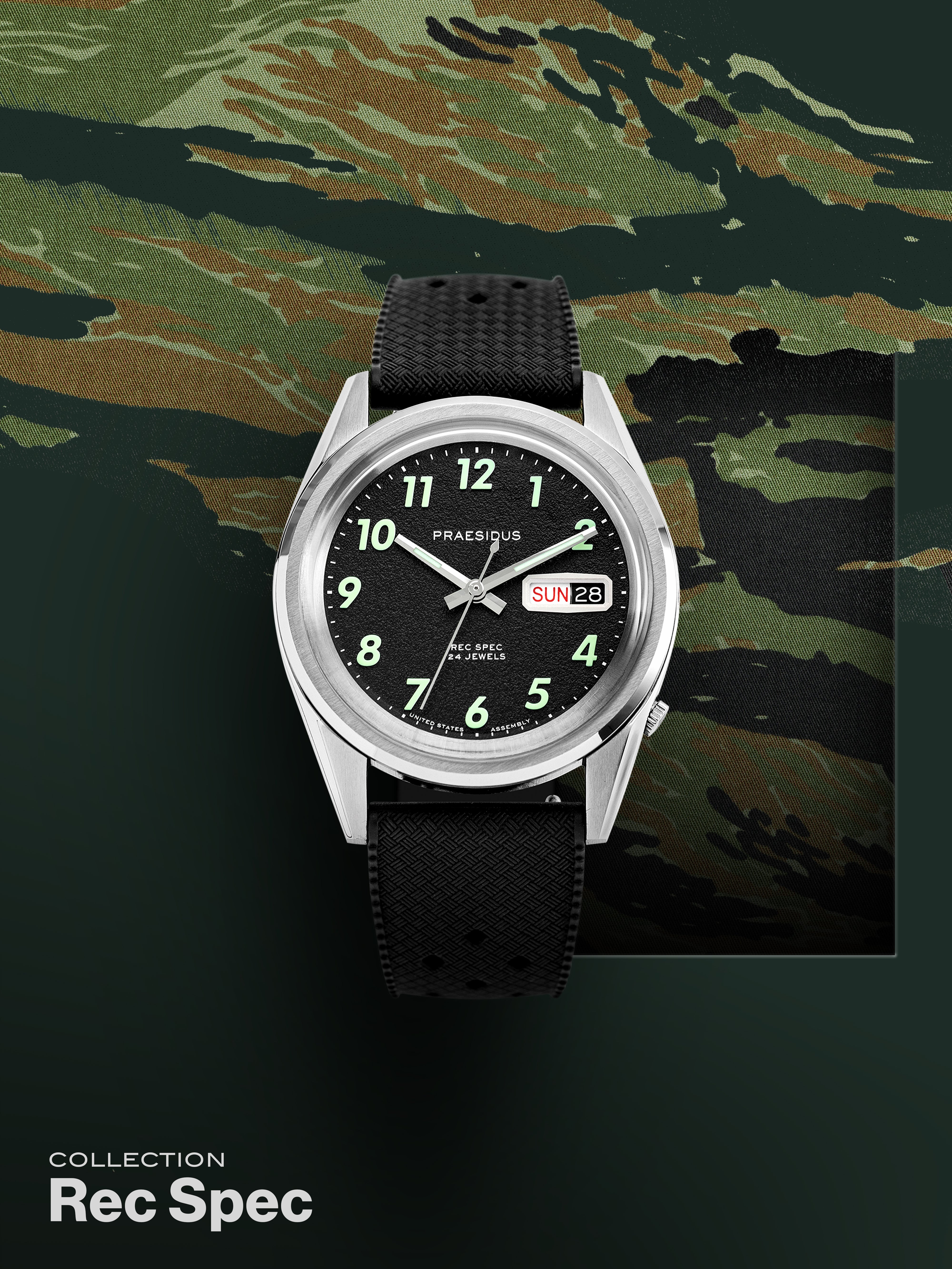
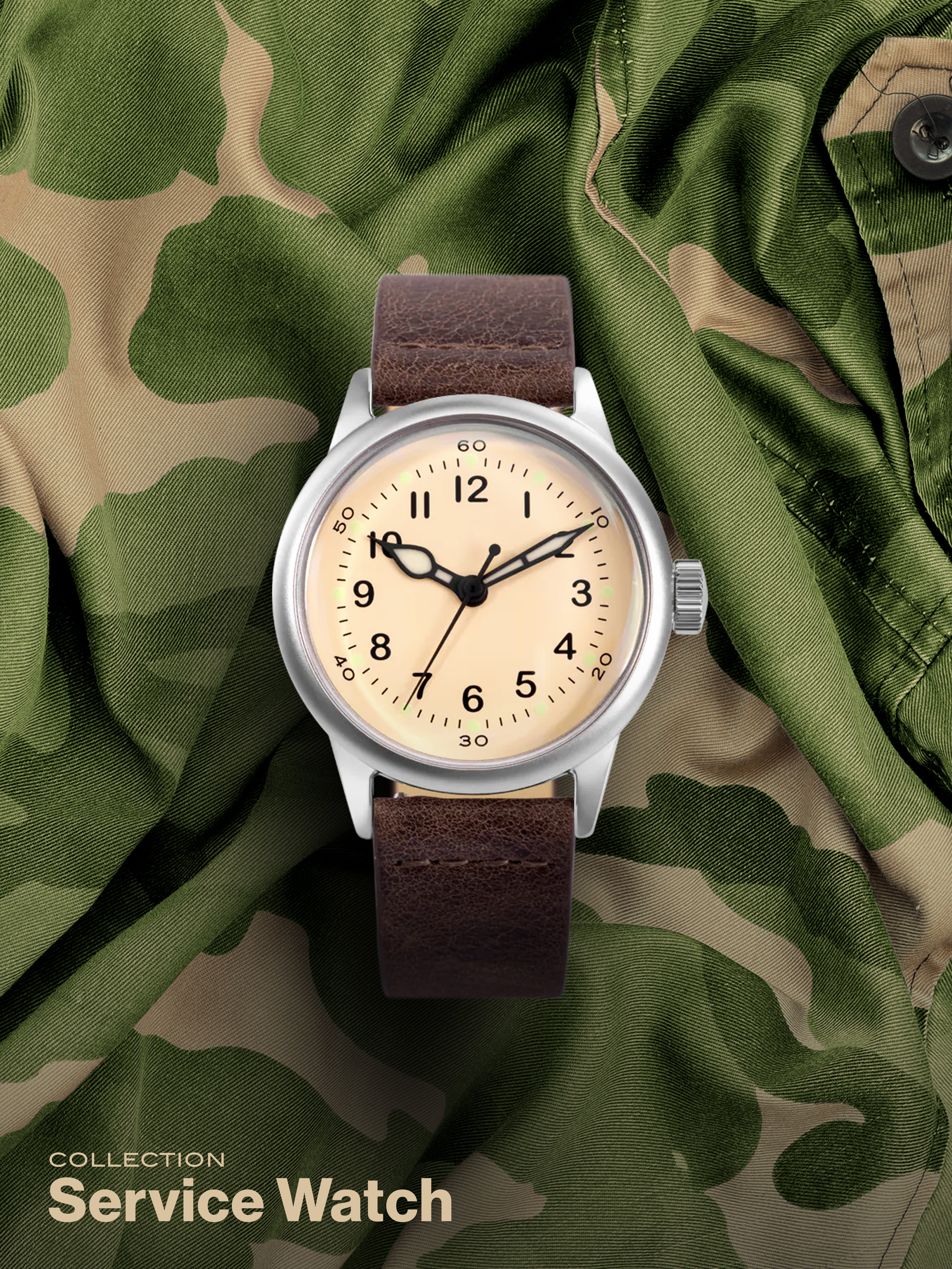


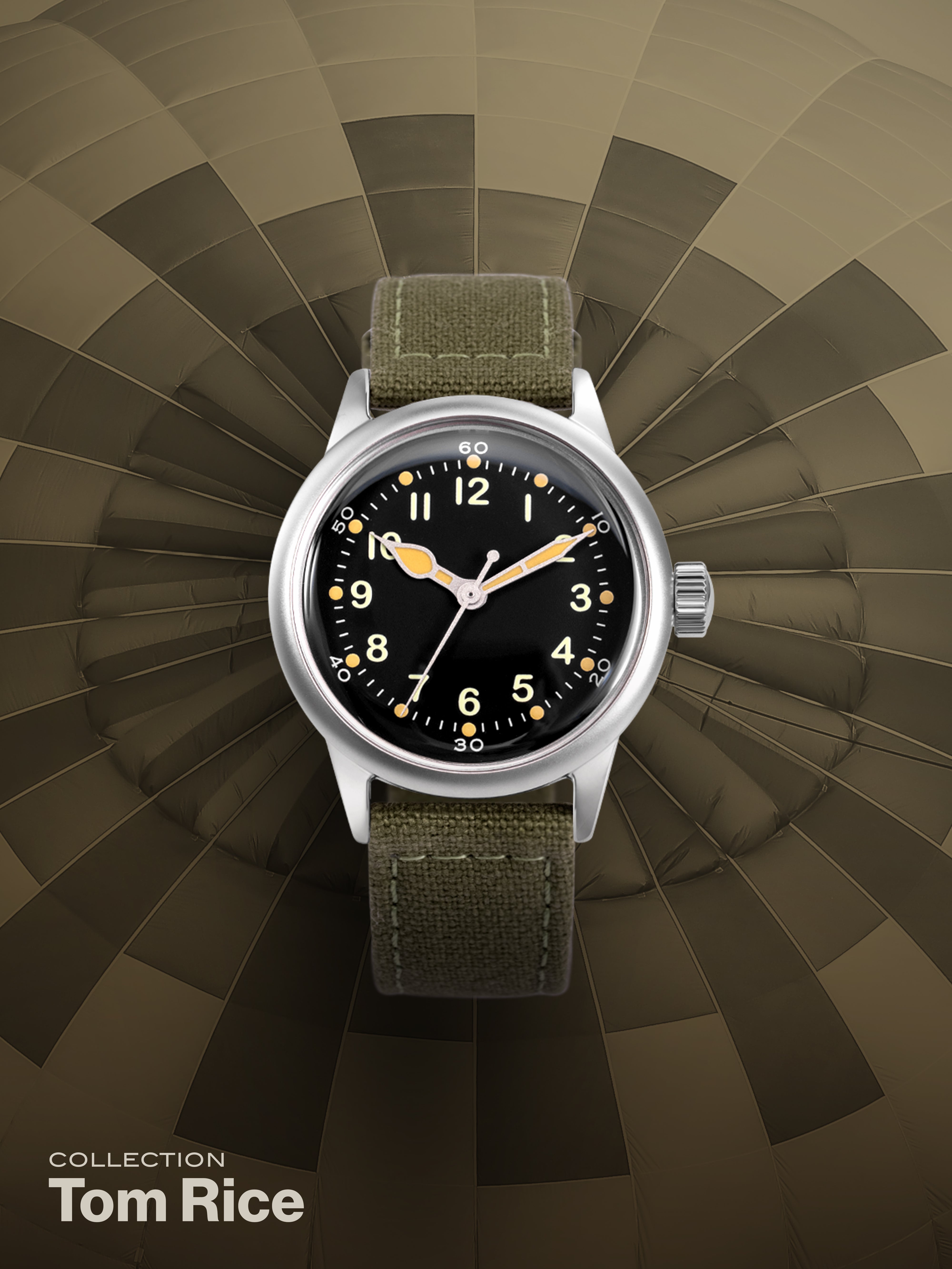
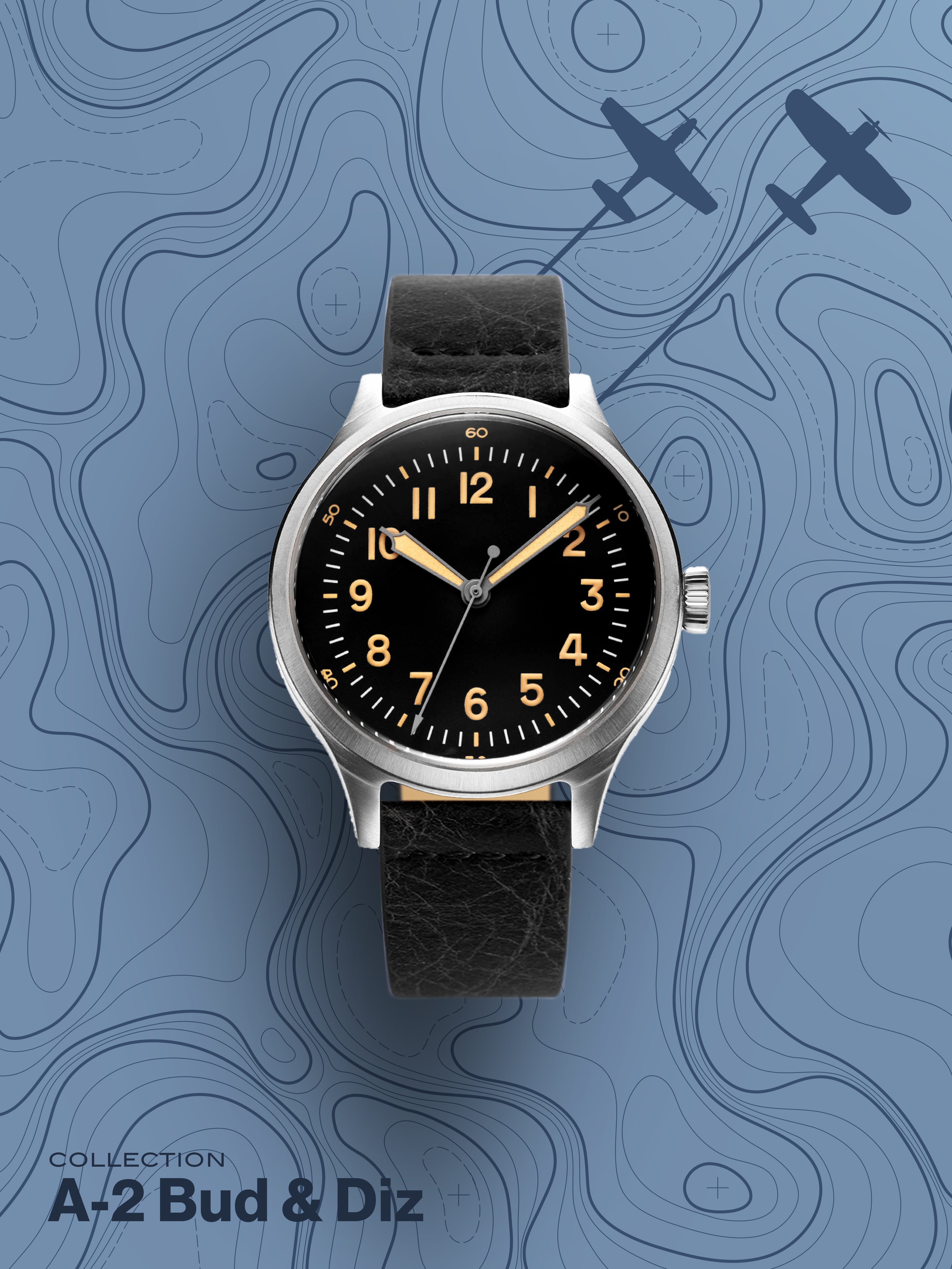
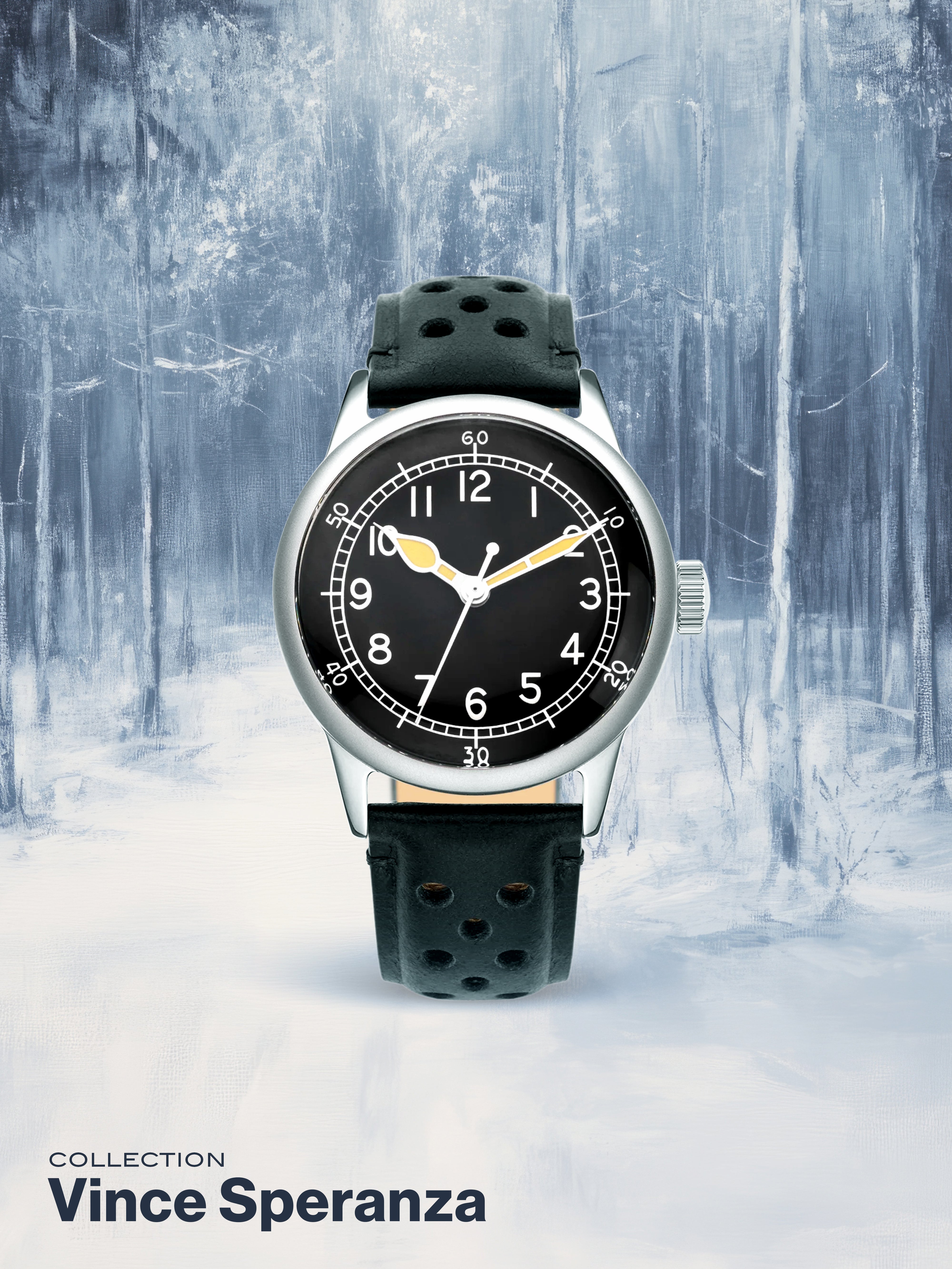
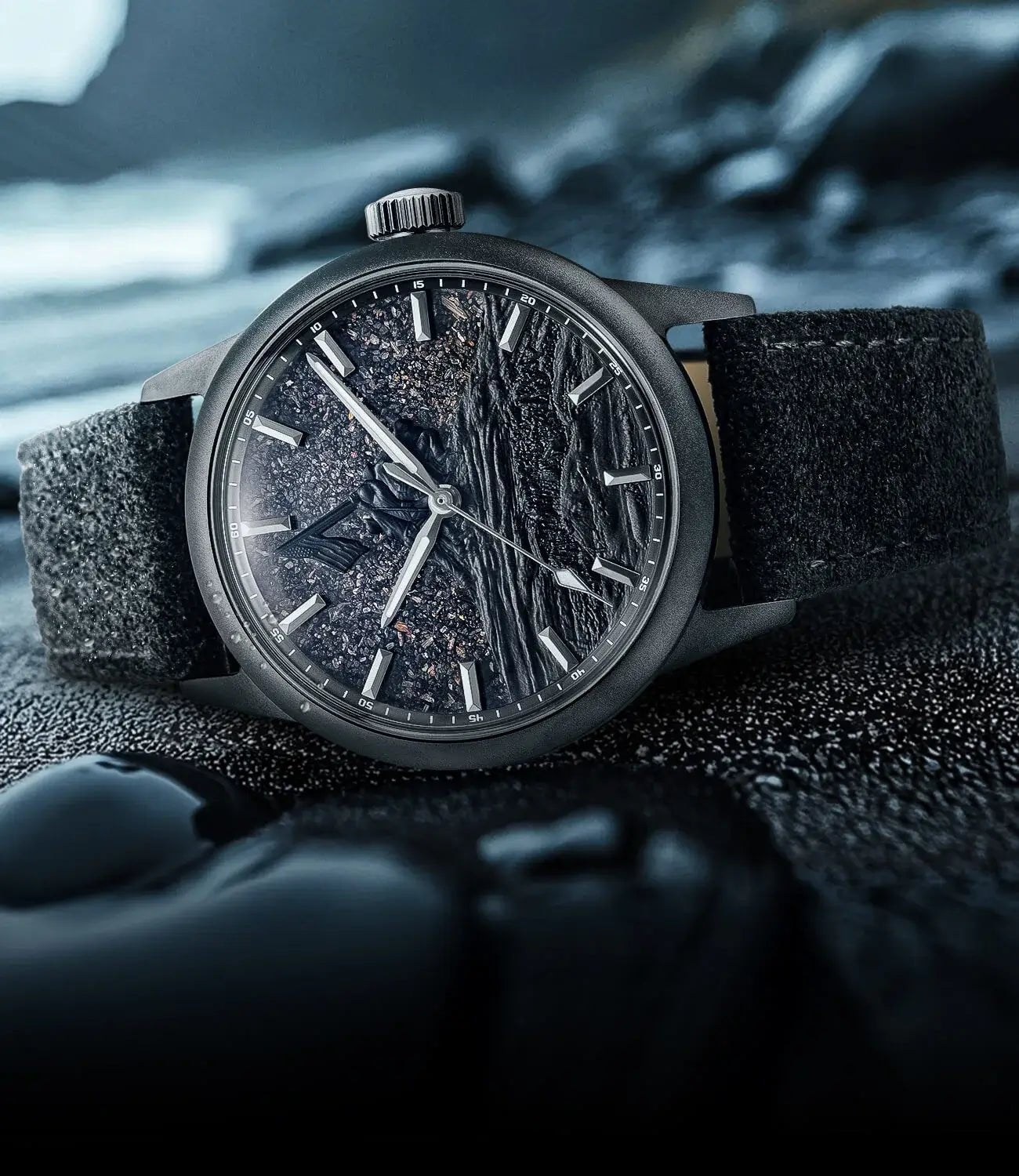
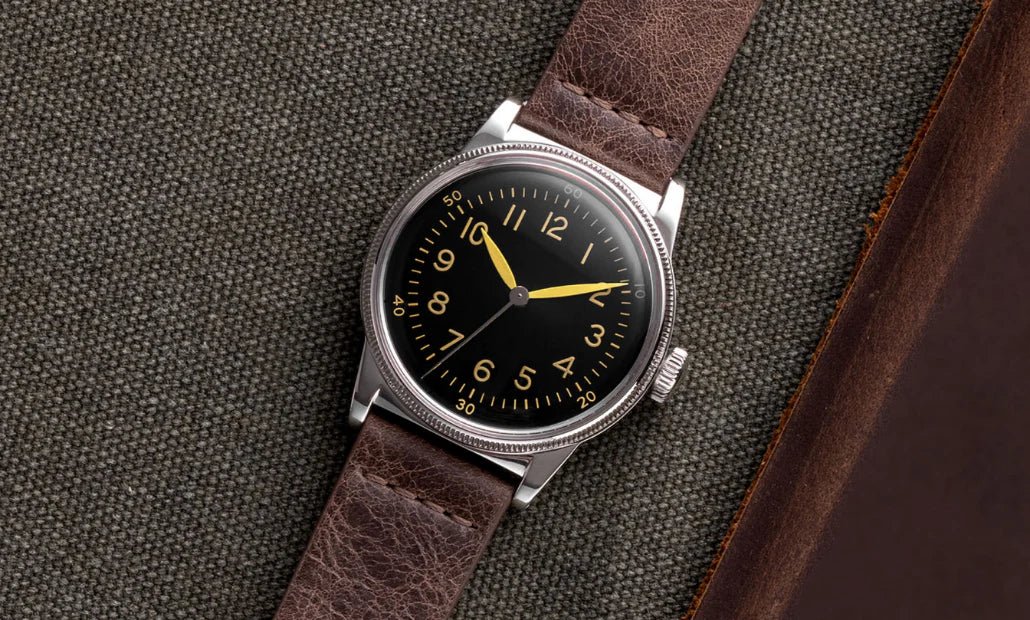
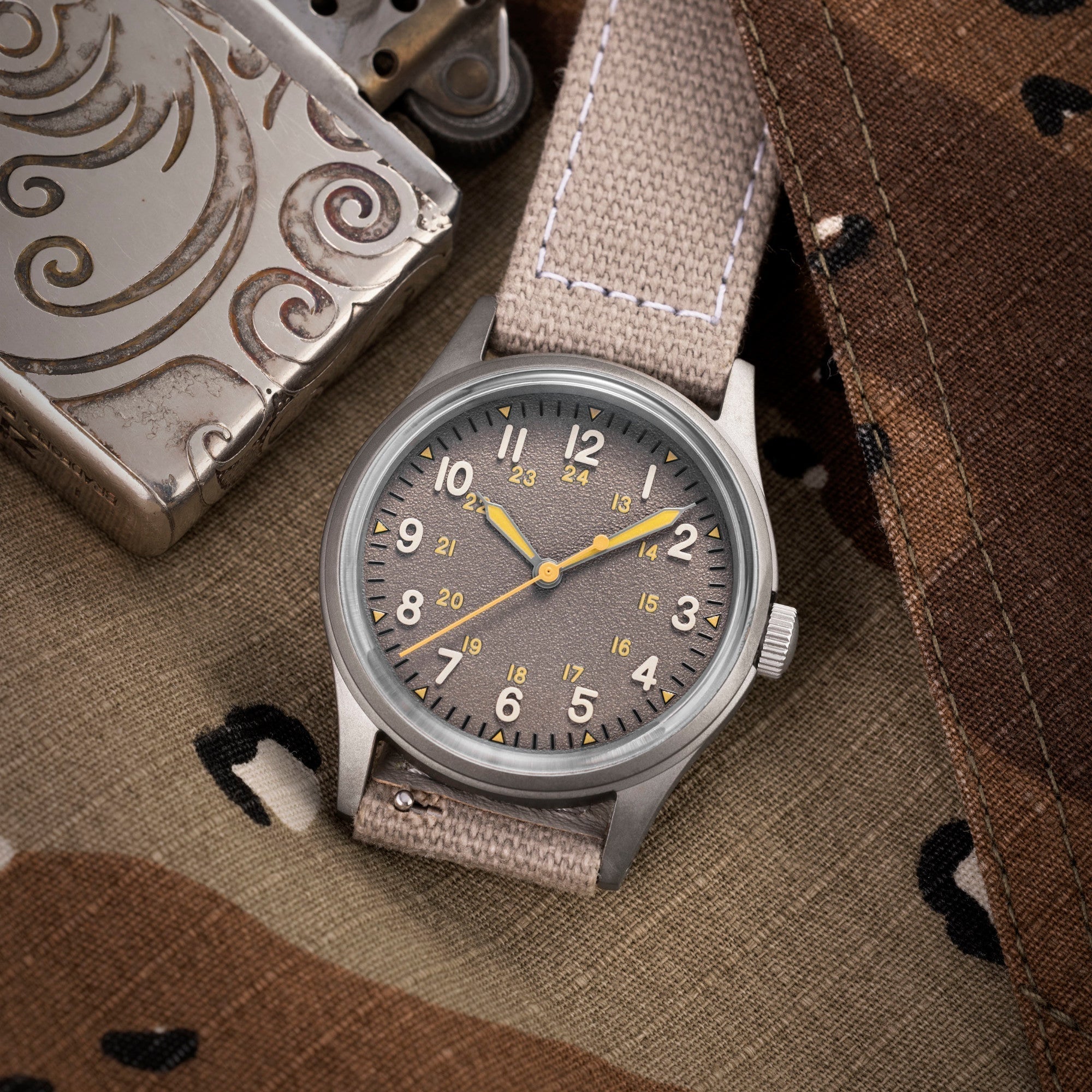




Leave a comment
This site is protected by hCaptcha and the hCaptcha Privacy Policy and Terms of Service apply.